
Forum encyclopédique d'histoire des Mormonismes et de la Franc-Maçonnerie & archéologie - sciences - aéronautique - paranormal - ufologie- orbs - ésotérisme - symbolisme
|
|
| | Nebulae |  |
| | | Auteur | Message |
|---|
Commandeur Adama
Magister Ordo Kolob - Admin
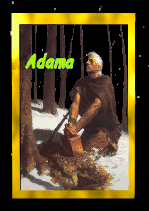
Nombre de messages : 8905
Age : 60
Localisation : Pays de Néphi - Mormon forest
Date d'inscription : 16/02/2007
Chevalier de Kolob - Vers la Sagesse
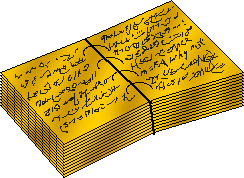 A reçu la Lumière: 180 A reçu la Lumière: 180
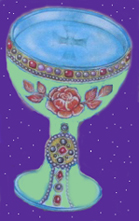 En quête du Vase Précieux et Elu: En quête du Vase Précieux et Elu:
    (150/200) (150/200)
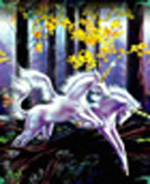 A la recherche du couple de Licornes du Jardin d'Eden: A la recherche du couple de Licornes du Jardin d'Eden:
    (7/700) (7/700)
 |  Sujet: Nebulae Sujet: Nebulae  Ven 12 Déc - 2:48 Ven 12 Déc - 2:48 | |
| Nebulae A nebula is an interstellar cloud of dust, hydrogen gas and plasma. It is the first stage of a star's cycle. Originally nebula was a general name for any extended astronomical object, including galaxies beyond the Milky Way (some examples of the older usage survive; for example, the Andromeda Galaxy was referred to as the Andromeda Nebula before galaxies were discovered by Edwin Hubble). Nebulae often form star-forming regions, such as in the Eagle Nebula. This nebula is depicted in one of NASA's most famous images, the "Pillars of Creation". In these regions the formations of gas, dust and other materials 'clump' together to form larger masses, which attract further matter, and eventually will become big enough to form stars. The remaining materials are then believed to form planets, and other planetary system objects. Many nebulae form from the gravitational collapse of diffuse gas in the interstellar medium or ISM. As the material collapses under its own weight, massive stars may form in the center, and their ultraviolet radiation ionises the surrounding gas, making it visible at optical wavelengths. An example of this type of nebula is the Rosette Nebula or the Pelican Nebula. The size of these nebulae, known as HII regions, varies depending on the size of the original cloud of gas, and the number of stars formed can vary too. As the sites of star formation, the formed stars are sometimes known as a young, loose cluster. Some nebulae are formed as the result of supernova explosions, the death throes of massive, short-lived stars. The material thrown off from the supernova explosion is ionised by the supernova remnant. One of the best examples of this is the Crab Nebula, in Taurus. It is the result of a recorded supernova, SN 1054, in the year 1054 and at the centre of the nebula is a neutron star, created during the explosion. Other nebulae may form as planetary nebulae. This is the final stage of a low-mass star's life, like Earth's Sun. Stars with a mass up to 8-10 solar masses evolve into red giants and slowly lose their outer layers during pulsations in their atmospheres. When a star has lost a sufficient amount of material, its temperature increases and the ultraviolet radiation it emits is capable of ionizing the surrounding nebula that it has thrown off.  Reflection Nebula In Astronomy, reflection nebulae are clouds of dust which are simply reflecting the light of a nearby star or stars. The energy from the nearby star, or stars, is insufficient to ionize the gas of the nebula to create an emission nebulae, but is enough to give sufficient scattering to make the dust visible. Thus, the frequency spectrum shown by reflection nebulae is similar to that of the illuminating stars. Among the microscopic particles responsible for the scattering are carbon compounds (e. g. diamond dust) and compounds of other elements such as iron and nickel. The latter two are often aligned with the galactic magnetic field and cause the scattered light to be slightly polarized (Kaler, 1998). Edwin Hubble distinguished between the emission and reflection nebulae in 1922. Reflection nebulae are usually blue because the scattering is more efficient for blue light than red (this is the same scattering process that gives us blue skies and red sunsets).  Diffuse Nebula Diffuse Nebula Most nebulae can be described as diffuse nebulae, which means that they are extended and contain no well-defined boundaries. In astronomy, diffuse nebulae is the general term for illuminated nebulae. The three types of diffuse nebulae are reflection nebulae, emission nebulae and supernova remnants. They are diffuse as opposed to the non-diffuse dark nebulae, i.e. the particles have spread out. In visible light these nebulae may be divided into emission nebulae and reflection nebulae, a categorization that depends on how the light we see is created. Emission nebulae contain ionized gas (mostly ionized hydrogen) that produces spectral line emission. These emission nebulae are often called HII regions; the term "HII" is used in professional astronomy to refer to ionized hydrogen. In contrast to emission nebulae, reflection nebulae do not produce significant amounts of visible light by themselves but instead reflect light from nearby stars. The Horsehead Nebula, an example of a dark nebula. Dark nebulae are similar to diffuse nebulae, but they are not seen by their emitted or reflected light. Instead, they are seen as dark clouds in front of more distant stars or in front of emission nebulae. Although these nebulae appear different at optical wavelengths, they all appear to be bright sources of emission at infrared wavelengths. This emission comes primarily from the dust within the nebulae.  Planetary Nebula Planetary nebulae are nebulae that form from the gaseous shells that are ejected from low-mass asymptotic giant branch stars when they transform into white dwarfs. These nebulae are emission nebulae with spectral emission that is similar to the emission nebulae found in star formation regions. Technically, they are a type of HII region because the majority of hydrogen will be ionised. However, planetary nebulae are denser and more compact than the emission nebulae in star formation regions. Planetary nebulae are so called because the first astronomers who observed these objects thought that the nebulae resembled the disks of planets, although they are not at all related to planets. List of Planetary Nebulae  Protoplanetary Nebula A protoplanetary nebula (PPN) is an astronomical object which is at the short-lived episode during a star's rapid stellar evolution between the late asymptotic giant branch (LAGB) phase and the subsequent planetary nebula (PN) phase.[4] A PPN emits strong in infrared radiation, and is a kind of reflection nebula. The exact point when a PPN becomes a planetary nebula (PN) is defined by the temperature of the central star.  Emission Nebula Emission nebulae are clouds of high temperature gas. The atoms in the cloud are energized by ultraviolet light from a nearby star and emit radiation as they fall back into lower energy states (in much the same way as a neon light). These nebulae are usually red because the predominant emission line of hydrogen happens to be red (other colors are produced by other atoms, but hydrogen is by far the most abundant). Emission nebulae are usually the sites of recent and ongoing star formation. Reflection nebulae are clouds of dust which are simply reflecting the light of a nearby star or stars. Reflection nebulae are also usually sites of star formation. They are usually blue because the scattering is more efficient for blue light. Reflection nebulae and emission nebulae are often seen together and are sometimes b oth referred to as diffuse nebulae.  Dark Nebula Dark nebulae are clouds of dust which are simply blocking the light from whatever is behind. They are physically very similar to reflection nebulae; they look different only because of the geometry of the light source, the cloud and the Earth. Dark nebulae are also often seen in conjunction with reflection and emission nebulae. A typical diffuse nebula is a few hundred light-years across.  Supernova remnants A supernova occurs when a high-mass star reaches the end of its life. When nuclear fusion ceases in the core of the star, the star collapses inward on itself. The gas falling inward either rebounds or gets so strongly heated that it expands outwards from the core, thus causing the star to explode. The expanding shell of gas form a supernova remnant, a special type of diffuse nebula. Although much of the optical and X-ray emission from supernova remnants originates from ionized gas, a substantial amount of the radio emission is a form of non-thermal emission called synchrotron emission. This emission originates from high-velocity and electrons oscillating within magnetic fields. | |
|   | | Commandeur Adama
Magister Ordo Kolob - Admin

Nombre de messages : 8905
Age : 60
Localisation : Pays de Néphi - Mormon forest
Date d'inscription : 16/02/2007
Chevalier de Kolob - Vers la Sagesse
 A reçu la Lumière: 180 A reçu la Lumière: 180
 En quête du Vase Précieux et Elu: En quête du Vase Précieux et Elu:
    (150/200) (150/200)
 A la recherche du couple de Licornes du Jardin d'Eden: A la recherche du couple de Licornes du Jardin d'Eden:
    (7/700) (7/700)
 |  Sujet: Re: Nebulae Sujet: Re: Nebulae  Ven 12 Déc - 2:48 Ven 12 Déc - 2:48 | |
| Nebulae From NASANebulae take the form of magnificent celestial works of art. Their names are a form of scrying or divination, laced with metaphoric, mystical, and mythological content. Orion The Orion Nebula The Orion Nebula (also known as Messier 42, M42, or NGC 1976) is a diffuse nebula situated south of Orion's Belt. It is one of the brightest nebulae, and is visible to the naked eye in the night sky. M42 is located at a distance of 1,270±76 light years and is the closest region of massive star formation to Earth. The M42 nebula is estimated to be 24 light years across. Older texts frequently referred to the Orion Nebula as the Great Nebula in Orion or the Great Orion Nebula. Yet older, astrological texts refer to it as Ensis (Latin for "sword"), which was also the name given to the star Eta Orionis, which can be seen close to the nebula from Earth.
The Orion Nebula is one of the most scrutinized and photographed objects in the night sky, and is among the most intensely studied celestial features. The nebula has revealed much about the process of how stars and planetary systems are formed from collapsing clouds of gas and dust. Astronomers have directly observed protoplanetary disks, brown dwarfs, intense and turbulent motions of the gas, and the photo-ionizing effects of massive nearby stars in the nebula.

Orion

The Sword of Orion - M42, M43

Great Orion Nebula NASA - October 23, 2008

The Electric Fires of Creation Thunderbolts - July 22, 2008

Reflection Nebula in Orion NASA - October 10, 2006

LL Ori and the Orion Nebula NASA - January 20, 2006

Orion Belt Stars - Alnitak, Alnilam, Mintaka NASA - October 13, 2005

Flame Nebula in Infrared NASA - July 13, 1999

Barnard's Loop - Emission Nebula in Orion Wikipedia
[b]Horsehead Nebula in Orion  Wisps Surrounding the Horsehead Nebula NASA - April 6, 2008  Horse Head Shaped Reflection Nebula IC 4592 NASA - August 8, 2006  Horsehead Nebula - B33 NASA - March 21, 2005  The Colorful Horsehead Nebula NASA - October 7, 2003 Horsehead Nebula Wikipedia | |
|   | | Commandeur Adama
Magister Ordo Kolob - Admin

Nombre de messages : 8905
Age : 60
Localisation : Pays de Néphi - Mormon forest
Date d'inscription : 16/02/2007
Chevalier de Kolob - Vers la Sagesse
 A reçu la Lumière: 180 A reçu la Lumière: 180
 En quête du Vase Précieux et Elu: En quête du Vase Précieux et Elu:
    (150/200) (150/200)
 A la recherche du couple de Licornes du Jardin d'Eden: A la recherche du couple de Licornes du Jardin d'Eden:
    (7/700) (7/700)
 |  Sujet: Re: Nebulae Sujet: Re: Nebulae  Ven 12 Déc - 2:49 Ven 12 Déc - 2:49 | |
| Eagle Nebula M16 and the Eagle Nebula NASA - July 19, 2008  Inside the Eagle Nebula NASA - February 26, 2006  The Eagle Nebula Wikipedia Red Square Nebula MWC 922: The Red Square Nebula NASA - April 16, 2007 "Red Square" Nebula's Secrets Revealed National Geographic - April 13, 2007  Rectangular Nebula is a Double Star MSNBC - May 11, 2004 Rungs of the Red Rectangle NASA - May 13, 2004  Red Square Nebula Wikipedia Cat's Eye Nebula Cat's Eye Nebula NASA - September 4, 2005  Cat's Eye Nebula NASA - October 31, 1999  Cat's Eye Wide and Deep NASA - June 29, 2007 Cat's Eye Nebula Wikipedia  Spokes in the Helix Nebula NASA - September 4, 2008  NGC 7293: The Helix Nebula NASA - August 3, 2007 Helix Nebula Wikipedia  The Heart and Soul Nebulas NASA - September 14, 2008 Soul Nebula Wikipedia  Light from the Heart Nebula NASA - October 3, 2006 Heart Nebula Wikipedia Veil Nebula Pickering's Triangle from Kitt Peak NASA - July 1, 2008  The Veil Nebula Unveiled NASA - December 6, 2005 Veil Nebula Wikipedia Dumbbell Nebula M76 Above and Below NASA - November 21, 2008  M27: The Dumbbell Nebula NASA - June 3, 2005 Dumbbell Nebula Wikipedia | |
|   | | Commandeur Adama
Magister Ordo Kolob - Admin

Nombre de messages : 8905
Age : 60
Localisation : Pays de Néphi - Mormon forest
Date d'inscription : 16/02/2007
Chevalier de Kolob - Vers la Sagesse
 A reçu la Lumière: 180 A reçu la Lumière: 180
 En quête du Vase Précieux et Elu: En quête du Vase Précieux et Elu:
    (150/200) (150/200)
 A la recherche du couple de Licornes du Jardin d'Eden: A la recherche du couple de Licornes du Jardin d'Eden:
    (7/700) (7/700)
 |  Sujet: Re: Nebulae Sujet: Re: Nebulae  Ven 12 Déc - 2:50 Ven 12 Déc - 2:50 | |
| Other Nebulae From NASA Bubble Nebula in Cygnus NASA - November 13, 2008  The North America Nebula NASA - October 28, 2008  C 5146: The Cocoon Nebula NASA - August 27, 2008 Cocoon Nebula Wikipedia  NGC 7008: The Fetus Nebula NASA - August 19, 2008  Eta Carinae and the Homunculus Nebula NASA - June 17, 2008 Carina Nebula Wikipedia Homunculus Nebula Wikipedia 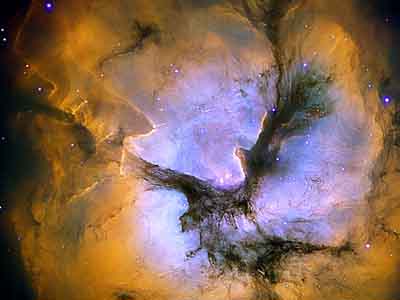 In the Center of the Trifid Nebula NASA - June 30, 2008 Trifid Nebula Wikipedia  Long Stem Rosette NASA - February 14, 2008 Rosette Nebula Wikipedia  A Beautiful Boomerang Nebula NASA - December 28, 2007 Boomerang Nebula Wikipedia  NGC 6888: The Crescent Nebula NASA - November 11, 2007 Crescent Nebula Wikipedia 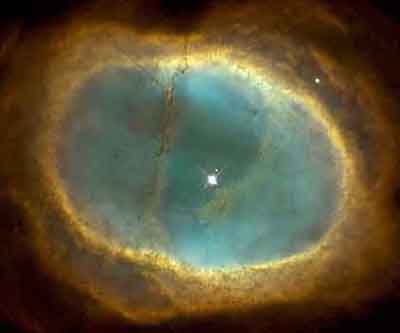 NGC 3132: The Eight Burst Nebula NASA - October 14, 2007 Eight-burst or Southern Ring Nebula Wikipedia  Tentacles of the Tarantula Nebula NASA - August 22, 2007 Tarantula Nebula Wikipedia  The Merope Reflection Nebula NASA - June 11, 2007 Merope Nebula Wikipedia | |
|   | | Commandeur Adama
Magister Ordo Kolob - Admin

Nombre de messages : 8905
Age : 60
Localisation : Pays de Néphi - Mormon forest
Date d'inscription : 16/02/2007
Chevalier de Kolob - Vers la Sagesse
 A reçu la Lumière: 180 A reçu la Lumière: 180
 En quête du Vase Précieux et Elu: En quête du Vase Précieux et Elu:
    (150/200) (150/200)
 A la recherche du couple de Licornes du Jardin d'Eden: A la recherche du couple de Licornes du Jardin d'Eden:
    (7/700) (7/700)
 |  Sujet: Re: Nebulae Sujet: Re: Nebulae  Ven 12 Déc - 2:51 Ven 12 Déc - 2:51 | |
|  Carina Nebula Panorama from Hubble NASA - April 30, 2007 Carina Nebula Wikipedia  Planetary Nebula NGC 2440 NASA - February 15, 2007  NGC 1499: The California Nebula NASA - October 24, 2006 California Nebula Wikipedia  IC 4628: The Prawn Nebula NASA - October 20, 2006  NGC 7635: The Bubble NASA - October 18, 2006 Bubble Nebula Wikipedia  The Eskimo Nebula from Hubble NASA - July 9, 2006 Eskimo Nebula Wikipedia  M57: The Ring Nebula NASA - June 25, 2006 Ring Nebula Wikipedia  M8: The Lagoon Nebula NASA - February 10, 2006 Lagoon Nebula Wikipedia  | |
|   | | Commandeur Adama
Magister Ordo Kolob - Admin

Nombre de messages : 8905
Age : 60
Localisation : Pays de Néphi - Mormon forest
Date d'inscription : 16/02/2007
Chevalier de Kolob - Vers la Sagesse
 A reçu la Lumière: 180 A reçu la Lumière: 180
 En quête du Vase Précieux et Elu: En quête du Vase Précieux et Elu:
    (150/200) (150/200)
 A la recherche du couple de Licornes du Jardin d'Eden: A la recherche du couple de Licornes du Jardin d'Eden:
    (7/700) (7/700)
 |  Sujet: Re: Nebulae Sujet: Re: Nebulae  Ven 12 Déc - 2:53 Ven 12 Déc - 2:53 | |
|  Crab Nebula Mosaic NASA - December 2, 2005 Crab Nebula Wikipedia  Snake in the Dark Nebula NASA - May 21, 2005 Snake Nebula Wikipedia  MZ3 - Ant Nebula NASA - May 1, 2005 MZ3 - Ant Nebula Wikipedia  The Fox Fur Nebula NASA - March 14, 2005 Fox Fur Nebula Wikipedia  IC 418: The Spirograph Nebula NASA - October 17, 2004 IC 418: The Spirograph Nebula Wikipedia  Ringed Nebulae NASA - July 9, 2004  Cone Nebula NASA - May 29, 2004 Cone Nebula Wikipedia 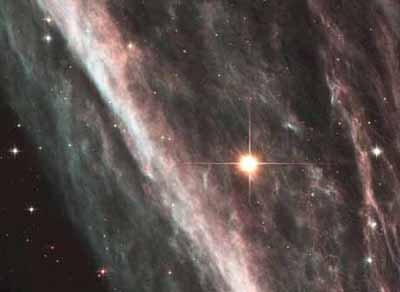 The Pencil Nebula Supernova Shockwave NASA - June 9, 2003 Pencil Nebula Wikipedia  Egg Nebula NASA - April 9, 2003 Egg Nebula Wikipedia  NGC 6369: The Little Ghost Nebula NASA - November 8, 2002 Little Ghost Wikipedia  MyCn18: An Hourglass Nebula NASA - June 15, 2002 Hourglass Nebula Wikipedia | |
|   | | Commandeur Adama
Magister Ordo Kolob - Admin

Nombre de messages : 8905
Age : 60
Localisation : Pays de Néphi - Mormon forest
Date d'inscription : 16/02/2007
Chevalier de Kolob - Vers la Sagesse
 A reçu la Lumière: 180 A reçu la Lumière: 180
 En quête du Vase Précieux et Elu: En quête du Vase Précieux et Elu:
    (150/200) (150/200)
 A la recherche du couple de Licornes du Jardin d'Eden: A la recherche du couple de Licornes du Jardin d'Eden:
    (7/700) (7/700)
 |  Sujet: Re: Nebulae Sujet: Re: Nebulae  Ven 12 Déc - 2:54 Ven 12 Déc - 2:54 | |
|  The Pipe Nebula NASA - May 26, 2002 Pipe Nebula Wikipedia  Red Spider Nebula NASA - July 24, 2001 Red Spider Nebula Wikipedia  The Cat's Paw Nebula NASA - December 7, 1999 Cat's Paw or Bear Claw Nebula Wikipedia  M2-9: Wings of a Butterfly Nebula NASA - March 21, 1999 Wings of a Butterfly Nebula or Butterfly Nebula Wikipedia In the News ... Comets Clash at Heart of Helix Nebula PhysOrg - February 13, 2007  Doom for Hubble's iconic Pillars of Creation BBC - January 9, 2007  In all likelihood, the pillars have long gone, destroyed by a supernova Pulsar in Crab Nebula Has Four Poles, Astronomers Suggest National Geographic - January 9, 2007  Astronomers Report Unprecedented Double Helix Nebula Near Center of the Milky Way PhysOrg - March 16, 2006  Best Photo of Crab Nebula National Geographic - December 2, 2005  First Detection Of Magnetic Fields In The Central Stars Of Four Planetary Nebulae Science Daily - January 2005  Trifid Nebula: Giant Incubator Science Daily - January 17, 2005 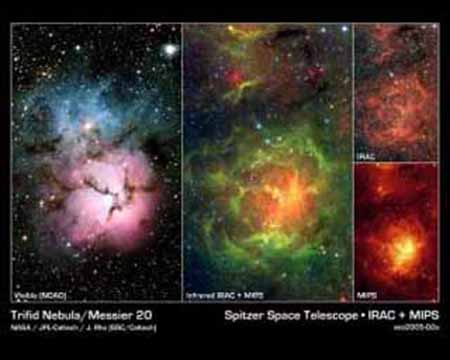 Source : http://www.crystalinks.com/nebula.html | |
|   | | Contenu sponsorisé
 |  Sujet: Re: Nebulae Sujet: Re: Nebulae  | |
| |
|   | | | | Nebulae |  |
|
| | Permission de ce forum: | Vous ne pouvez pas répondre aux sujets dans ce forum
| |
| |
| |
|

